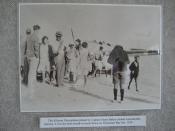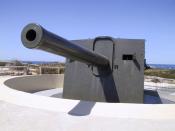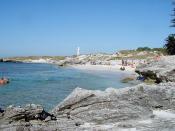Julie Dowling was born in Subiaco Perth, on 30 January, 1969. She is a member of the Aboriginal community and speaks the Badimaya/Yamatji language. DowlingÃÂs life was rather hard, with her father leaving the family, her violent drunken uncle who harassed her and her sister. Add to this, Dowling and her sister faced racism for being a white-skinned aboriginal.
Julie DowlingÃÂs artworks often show the history of Aboriginals to other Australian Indigenous and non-Indigenous peoples; these often contain political messages about how indigenous people have been treated for centuries.
One of her artworks is her painting called ÃÂUncle FreedomÃÂ. The painting was created in 2000 at Rottnest Island, Western Australia, measuring at 100 X 200cm, and created on canvas using Acrylic, oil and ochre.
The painting tells the story of her male relatives between the 1860s and 1920s who fought colonists from taking over their land. Many of the freedom fighters were taken captives, many dying from diseases later on.
ÃÂUncle FreedomÃÂ, from what I see, portrays a dark skinned man chained up and 2 gaunt faces that can be seen in the background. The menÃÂs faces were a mixture of both sadness and anger. I think this is because that they werenÃÂt happy at what was happening, freedom warriors being taken while colonists were still occupying their land. To me, the dark background and the emotions on their faces makes the atmosphere really sad and realistic, as if you yourself was there experiencing it.
The first thing I noticed about the chained man was how the chain was about his neck, and IÃÂd say this was the focal point. This chain is in silver white coloring, giving it a metallic feel. As I said, Dowling used dark coloring and shading to represent the atmosphere, which is sadness and...


